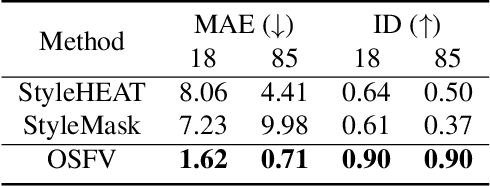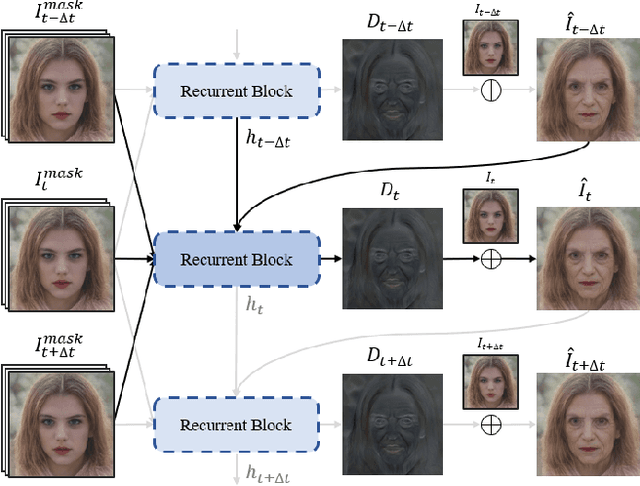KwangHee Lee
Video Face Re-Aging: Toward Temporally Consistent Face Re-Aging
Dec 07, 2023



Abstract:Video face re-aging deals with altering the apparent age of a person to the target age in videos. This problem is challenging due to the lack of paired video datasets maintaining temporal consistency in identity and age. Most re-aging methods process each image individually without considering the temporal consistency of videos. While some existing works address the issue of temporal coherence through video facial attribute manipulation in latent space, they often fail to deliver satisfactory performance in age transformation. To tackle the issues, we propose (1) a novel synthetic video dataset that features subjects across a diverse range of age groups; (2) a baseline architecture designed to validate the effectiveness of our proposed dataset, and (3) the development of three novel metrics tailored explicitly for evaluating the temporal consistency of video re-aging techniques. Our comprehensive experiments on public datasets, such as VFHQ and CelebV-HQ, show that our method outperforms the existing approaches in terms of both age transformation and temporal consistency.
DiffFace: Diffusion-based Face Swapping with Facial Guidance
Dec 27, 2022



Abstract:In this paper, we propose a diffusion-based face swapping framework for the first time, called DiffFace, composed of training ID conditional DDPM, sampling with facial guidance, and a target-preserving blending. In specific, in the training process, the ID conditional DDPM is trained to generate face images with the desired identity. In the sampling process, we use the off-the-shelf facial expert models to make the model transfer source identity while preserving target attributes faithfully. During this process, to preserve the background of the target image and obtain the desired face swapping result, we additionally propose a target-preserving blending strategy. It helps our model to keep the attributes of the target face from noise while transferring the source facial identity. In addition, without any re-training, our model can flexibly apply additional facial guidance and adaptively control the ID-attributes trade-off to achieve the desired results. To the best of our knowledge, this is the first approach that applies the diffusion model in face swapping task. Compared with previous GAN-based approaches, by taking advantage of the diffusion model for the face swapping task, DiffFace achieves better benefits such as training stability, high fidelity, diversity of the samples, and controllability. Extensive experiments show that our DiffFace is comparable or superior to the state-of-the-art methods on several standard face swapping benchmarks.
 Add to Chrome
Add to Chrome Add to Firefox
Add to Firefox Add to Edge
Add to Edge